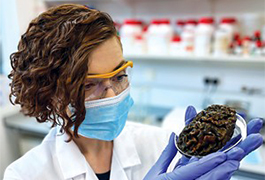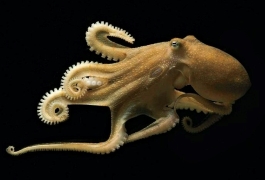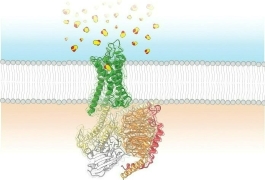The Chemistry of Cold-Water Washing

When the Cincinnati Bengals faced the Los Angeles Rams in the 2022 Super Bowl, Todd Cline had a lot riding on the game. Cline is the head of sustainability for the fabric care division of Procter & Gamble in North America, and he had recently convinced half the teams in the National Football League, including the Bengals and Rams, to wash their uniforms in cold water. Compounding the stakes, both Super Bowl teams wore white.
The campaign was part of P&G’s push to convince consumers to switch to cold water for most loads of laundry. P&G makes several mass-market laundry detergent brands, including Tide, that it has reformulated to work at low wash temperatures.
“It’s good enough for the NFL, and they have a pretty high standard for what shows up on TV for the uniforms every week. And we didn’t have any issues,” Cline said at Cleaning Products US 2023, an industry meeting held in the fall in Washington, DC. “That just shows you can wash things on cold.”
Related: Periodic Graphics: Combating underarm odor
Companies up and down the cleaning supply chain are pushing for cold-water washing because it is by far the biggest lever for reducing household laundry’s greenhouse gas footprint. Consumer product giants such as P&G and Unilever are aiming for net-zero emissions over the full life cycle of their products by 2040, some of the most aggressive targets for greenhouse gas reduction among the chemical industry’s customer segments. Detergent makers can’t meet those goals without changing consumer behavior, and consumers won’t switch if their clothes aren’t getting clean. Better chemistry is central to making it all work.
When greenhouse gas emissions associated with laundry detergents are measured from raw materials all the way through eventual decomposition in the environment, as much as 90% come from heating the water the detergents do their job in, according to Kayleigh Foster, the head of marketing for BASF’s cleaning division.
People in the US and Canada wash about 30 billion loads of laundry per year, Cline said. “If you move from hot to cold, it’s about a 90% reduction in the energy. If you move from warm to cold, it’s still about a 70% reduction.”
Overall, if 75% of the region’s washing were done in cold water, 27 million metric tons of CO2 emissions would be avoided over the course of a decade, Cline said. “It’s the equivalent of powering both San Francisco and New York for an entire year.”
Moreover, cold-water washing can be a gateway to bigger gains for companies that need to change consumer behavior to meet sustainability goals, according to Catalina Flores, an analyst at the market research firm Euromonitor International. Speaking at the cleaning product meeting, she said right now is the perfect time to change habits and routines, “We’re still coming out of the pandemic, still adjusting to this new world. Changing to cold water is a great first step.”
At the same time, “sustainability is not a superhigh priority for consumers today,” Flores said. “We’ve seen a rise in interest in sustainability for the past 5 or 10 years, and we’re hoping that that interest will continue to grow.” But inflation and other economic issues are causing consumers to watch their wallets, so for now, consumer product makers should focus their marketing on the cost savings of cold-water washing, she said.
Indeed, P&G advertises that the average US household can save $150 per year by switching most of their laundry to cold water.
Michael Mattingly, executive director of product management for clothes care for GE Appliances, said at the meeting that sustainability messaging turns some customers away because they’ve learned to associate green claims with poor performance. GE Appliances is working on washing machine designs that use less energy and less water, he said, but for some market segments, “we’ll call it another name that doesn’t bring the ‘eco’ into it.”
Gen Z, made up of people who are now in late adolescence and early adulthood, works differently—up to a point, Flores said. They have a more durable interest in sustainability, and they want to see data instead of broad claims. But across demographics, the premium that people will pay to go green is limited. “If we look at the majority of consumers, they want to pay the same amount” as they would for conventional options, she said.
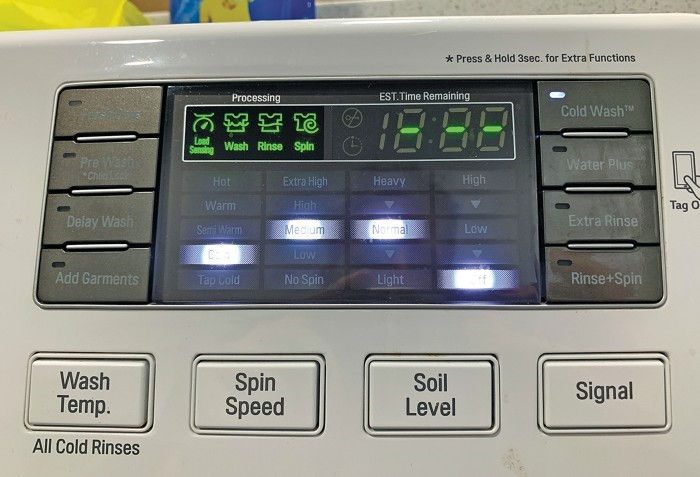
Lower laundry temperatures aren’t just about reducing energy consumption or even saving money, Flores pointed out. “Cold-water washing is really good for fabric protection.” The washing instructions for delicate fabrics and animal fibers usually call for cold water, she said, and low-quality garments from fast-fashion brands like Zara and Shein might not last a single season with hot-water washing.
But companies like P&G couldn’t claim good cleaning performance in cold water without improved ingredients that work well at low temperatures. Chemical company researchers have improved surfactants, enzymes, and antiredeposition agents to the point that most loads don’t need hot water to get clean. “Ninety-five percent of loads don’t have enough soil,” Mattingly said, to require the washing intensity they get now. “Moving to cold is going to delight most of the time.”
Related: Quiz: How much do you know about combating underarm odor?
Making the move work starts with surfactants, the backbone of any laundry detergent. In a surfactant, a hydrophobic end grabs onto dirt, oil, or other nonpolar stain particles, and a hydrophilic group pulls them into the wash water. There, more surfactant molecules form a sphere called a micelle around the stain particles, and the whole assembly goes out in the rinse cycle.
Just like almost all other chemical processes, surfactant chemistry is slower when the temperature is lower. The primary surfactants in conventional laundry detergents are usually anionic molecules like sodium lauryl ether sulfate. Their oil-grabbing groups are chains of 12–14 carbon atoms. Blends in that length range are affordable commodity chemicals that can be made from tropical coconut or palm kernel oil or from petroleum. Poly(ethylene oxide) chains up to seven units long and ionic head groups form the hydrophilic end of the molecule.
Shortening the chain length to 10 carbon atoms and narrowing the range in the number of ethylene oxide units to three to five boosts cold-water performance, according to Stuart Holt, global strategic marketing manager for cleaning at the specialty chemical maker Nouryon. “You really want to concentrate as much power and performance into as small a space as possible, and narrow-range ethoxylates allow that,” he says. C10 surfactants pack more punch but are more expensive, in part because their precursors are less abundant in tropical plant oils than the C12 and C14 versions are.
Lourdes Alonso, a research chemist at the surfactant maker Stepan, notes that water colder than 21 °C can freeze some oils into fats that become embedded in fabric. She says formulators can use a secondary, nonionic surfactant as a penetrating agent to break up those fat globs and remove them from textiles.
Liquid laundry detergents often already use secondary surfactants, such as sodium xylenesulfonate or quaternary ammonium salts, but their role is mostly to keep everything else in homogeneous solution. Nouryon recently launched a nonionic surfactant called Berol Nexxt that can do that job while also boosting a formulation’s cleaning power by penetrating solid stains, Holt says.
If you move from hot to cold, it’s about a 90% reduction in the energy. If you move from warm to cold, it’s still about a 70% reduction.
-Todd Cline, senior director of sustainability for fabric care in North America, Procter & Gamble
Fatty alcohol ethoxylates with 11–15 carbon atoms in their hydrophobic tails and three to seven ethylene oxide units at the polar end are also popular choices for next-generation nonionic surfactants, Alonso says. Stepan has petrochemical and biobased versions in its Bio-Soft line of products.
After a fat is broken up, a primary, anionic surfactant can swoop in and capture the soil particles within micelles. “It’s a whole different type of mechanism,” Alonso says.
The typical anionic-to-nonionic ratio in a cold-water formulation is between 1:1 and 2:1, Alonso says; it helps to add a few percent of alkyl amine oxides, a type of amphoteric surfactant. Stepan and other companies have tried to develop all-in-one cold-water surfactants, Alonso says. “We found out that it is not possible. You need a combination of surfactants.”
Like surfactants, the dirt-busting enzymes found in laundry detergents must be customized for cold water. It’s a challenge that the enzyme maker Novozymes has been working on for years.
“We do that because North America and Europe are going low temperature, and we do that because we need to succeed in emerging markets,” says Gøther Lars Souza Mathisen, the firm’s business director for household care in North and Central America. Most households in Brazil, India, China, Southeast Asia, and Japan already wash their clothes in cold water, he says.
Amylases, which break down starches into sugars, are a good example. Mathisen says Novozymes didn’t have any amylase sales in Japan until it introduced a cold-tolerant version in 2016, because the average wash temperature there is 15 °C. That amylase, Amplify Prime, is now a success in Japan. And because it also performs well at higher temperatures, it’s now the main amylase the firm sells for laundry worldwide.
Novozymes’s enzyme development process is complex. Mathisen says the firm harvests wild-type enzymes from nature—Iceland, in the case of the cold-tolerant amylase. “We always start with what we can find in the lodgings of nature,” he says.
But an enzyme that’s native to a bacterium living under a cold, wet rock won’t necessarily hold up in the chemical-rich water in a washing machine. So scientists at the company make and screen millions of variants to find the ones that remain active at laundry-relevant pH levels and in the presence of other ingredients, Mathisen says.
Generally, that means a variant that is tight and compact, he says. It will often have sulfur bridges to keep a structure rigid in the presence of surfactants and will protect any structural metal atoms from chelating agents, which soften the wash water by capturing inorganic cations.
“The more you tighten it, the more stable it gets in a detergent matrix. But the more you tighten it, the slower it becomes,” Mathisen explains. He emphasizes that the winning variants are the ones that manage to be both stable and fast at degrading their substrates. “It’s a matter of finding the outliers,” he says. “Getting it to work in lower temperatures has been about getting it more mobile, jumping faster from substrate to substrate.”
In addition to amylases, lipases that break down fats and proteases that break down proteins feature in many brand-name laundry detergents. Novozymes and its competitors are rolling out enzymes that work on xanthan gum, DNA, cellulose, and β-glucan. Mathisen says those ingredients show promise for dealing with fermented body soil and food stains—complex grime that forms as microbes live and die on laundry as it waits for washing. All are optimized to work in cold water.
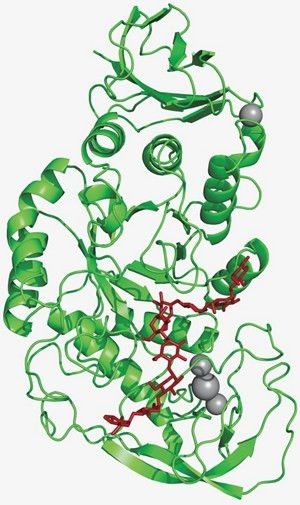
Cleaning-product chemists talk about Sinner’s circle, which is the notion that cleaning power is driven by four main variables: temperature, chemistry, mechanical action, and time. The name comes not from any connection between cleanliness and godliness but from Herbert Sinner, a chemical engineer at the cleaning-product maker Henkel who introduced the framework in 1959. Enzymes in general become more important in cold-water washing, Mathisen says, because their activity drops more slowly with temperature than that of surfactants.
The same is true for antiredeposition agents, a set of ingredients that consumers rarely hear about but that play an important role in keeping them happy. Products that contain these chemicals will sometimes be marketed as keeping colors bright or fighting off graying.
These materials, mostly polymers with molecular weights of a few thousand daltons, keep soil particles suspended in solution so that they don’t just hop from a shirt to a pair of pants, for example. Michael Capracotta, a technical manager for cleaning at BASF, says the agents appear in liquid laundry detergents at concentrations of 1–3% and in solid formats at up to 5%.
Antiredeposition agents add more value as surfactant activity slows and solubilities drop with temperature. “They also work in warm-water conditions, but because of the challenges you have in cold water, having highly efficient molecules like these polymers becomes more important,” Capracotta says.
The incumbent antiredeposition agents are based on polyacrylic acid, sometimes copolymerized with maleic acid. They are made from petrochemical feedstocks and are generally not biodegradable. BASF aimed at those weak points in November when it launched Bverde GP 790 L, a modified polysaccharide that Foster says is 79% biobased and readily biodegradable.
Foster says the polysaccharide can compete on cost with its acrylic predecessors, and the firm is eager to see how customers respond to it. “Consumers ultimately are looking for more-sustainable alternatives to what’s in the marketplace,” she says.
Cold-water compatibility was part of the development process for the product. “I don’t say that it’s quite ‘cost of entry’ yet,” Foster says. “But it’s definitely something that we consider as a really strong market need and driver for our innovation pipeline.”
Related: European court rejects Symrise bid to avoid animal tests
Ingredient R&D is meeting customer demand as laundry markets gradually shift to cold water. “There was this perception that cold-water washing was not as effective as warm-water or hot-water washing, especially when it comes to tackling very deep stains,” Foster says. “Due to these changes in technology and ingredient formulations, we’ve been able to see a significant enhancement in the efficiency of cold-water washing.”
Europe washes the warmest, at an average of 40 °C. “Therefore the biggest changes, the biggest savings, are likely to be in that region,” Nouryon’s Holt says. That average has declined by 1–2 °C in just the past year, he says.
“Whilst that maybe doesn’t sound like very much, that’s a significant overall CO2 footprint savings,” Holt says. North American habits are moving in the same direction, albeit from a lower baseline temperature average. In addition to brands, industry and environmental groups are encouraging the change. Examples include the Cold Water Saves campaign from the American Cleaning Institute and the Cold Wash Challenge from the World Wildlife Fund.
Although no one person’s laundry practices are going to bring down global greenhouse gas levels, the reformulation of detergents around ingredients that work in cold water is the sort of market-level shift that puts sustainable behavior changes in reach for everyone. “If you really want to help the environment, start doing the laundry with cold water,” Stepan’s Alonso says. “It’s what I recommend to others. You can buy the detergent now, set the machine to cold, and start.”

